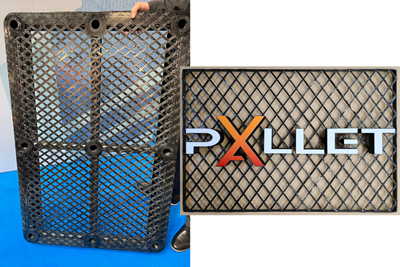Precision blades support industrial fiber cutting needs
CAMX 2024: Machine knives and industrial razor blades supplier American Cutting Edge offers composites manufacturers staple and custom cutting options.
Share
American Cutting Edge (ACE, Miamisburg, Ohio, U.S.), a division of CB Manufacturing & Sales Co. Inc., is a supplier of machine knives and industrial razor blades with the goal of removing industrial cutting challenges.
The company manufactures fiber chopping blades. Used in fiberglass cutting machines, the cutting implements are well suited to cutting reinforcement fibers and fiberglass to various industry standards, as well as custom lengths, to be used in fiber, textile and composites industries.
ACE’s staple fiber blades include:
- Mark IV and Mark V blades: Primarily used in tow cutting and fiber chopping
- Krupp blades: Used in finer chopping applications
- Staple blades: Offered in two standard sizes and used for fiber chopping
- Chopper gun blades: Use to chop and spray fiberglass mixed with resin
- Hook blades: Its ability to protect an application’s underlayment makes the blades suitable for textiles, roofing and flooring
- Pierret compatible knives: Applied to recycled fiber materials
Blades come in various materials and coatings such as stainless steels (420 and 440 series stainless for wet chop applications), carbon steel, tungsten carbide, zirconia ceramic, titanium nitride (TiN), titanium carbide (TiC) and ceramic.
Custom blades to customer specifications are also possible, particularly as many off-the-shelf fiber chopping machines are custom-built for their exact material application.
Related Content
-
Innoptus Solar Team select JetCam for 2023 World Solar Challenge vehicle fabrication
JetCam software streamlines nesting performance for composite ply assembly and cutting for the team’s 100th solar vehicle.
-
Velocity Composites completes first kits from advanced manufacturing facility in Alabama
Full-rate production for GKN Aerospace should begin before next financial year, site will serve as hub for other launch customers as composites grow in wind energy, urban air mobility and electric vehicles.
-
Aptco Technologies supports supply of Compcut cutting machines
The pan-European partner to Sharp & Tappin will actively promote, sell and support the composite cutting solution to meet rising demand across Europe.
Related Content
Innoptus Solar Team select JetCam for 2023 World Solar Challenge vehicle fabrication
JetCam software streamlines nesting performance for composite ply assembly and cutting for the team’s 100th solar vehicle.
Read MoreVelocity Composites completes first kits from advanced manufacturing facility in Alabama
Full-rate production for GKN Aerospace should begin before next financial year, site will serve as hub for other launch customers as composites grow in wind energy, urban air mobility and electric vehicles.
Read MoreAptco Technologies supports supply of Compcut cutting machines
The pan-European partner to Sharp & Tappin will actively promote, sell and support the composite cutting solution to meet rising demand across Europe.
Read MoreZünd, Loop Technology partner on FibreLine preforming system
Pairing Loop Technology’s automation with Zünd digital cutters provides faster cutting, less stray fibers, higher ply accuracy and more precise preforms for composite aerostructure manufacturing.
Read MoreRead Next
Carbon fiber composite pallet revolutionizes freight industry
LOG Point Pallet fuses advanced materials with innovative design and manufacturing to improve supply chains worldwide.
Read MoreComposite combat drone inlet duct proves novel fabrication approach
The 30-foot overbraided Frankenstein demonstrator was designed by NIAR, A&P and Fiber Dynamics to explore more flexible manufacturing of complex composite structures.
Read MoreVIDEO: High-volume processing for fiberglass components
Cannon Ergos, a company specializing in high-ton presses and equipment for composites fabrication and plastics processing, displayed automotive and industrial components at CAMX 2024.
Read More













